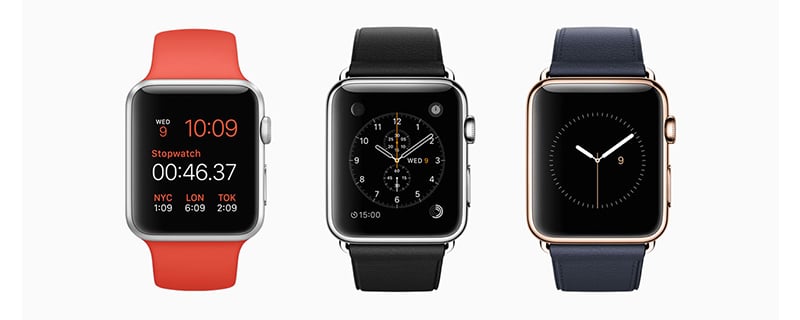Do you want to take your story to the big screen?
In this article, you’ll be told how to transform a story into a real movie script or scenario.
I’ll answer questions like: what does a movie script need? how does it look and what do I have to pay attention to when writing the script?
What Is A Movie Script?
A script is a fully (written) adaption of a story, it serves as a tool for filmmakers that aids in understanding how the movie will look, what the characters will say and what they will do.
Basically, you describe all the visible en audible things that are important to the story.
You Can Base Your Movie Script On These Sources:
- An original story
- A book
- Another movie that already exists
- An (historic) event
An original story 
Did you write a story yourself? Or do you have a great idea for a movie? If you do, then it’s possible to transform this into a movie script.
If you’re really thinking of looking for a filmmaker for your script, or even if you want to make the movie yourself, you have to keep in mind that making a movie costs a lot of money, this is very important to keep in mind when writing a script.
It’s possible to write a story about the discovery of life on Mars as a beginner, but keep in mind that such a story may cost millions for it to be brought to the big screen.
Writing a story is free, but making a movie costs heaps of money! Stay realistic when writing a script and think about the person you’re writing the script for: a rich filmmaker in Hollywood, a local production company, or you and your mates? It’s a big difference in cost.
A book
Are you writing a script based on a book (that is yours)? Think well about the differences between a book and a movie:
- A filmmaker doesn’t have a lot of time to work with: a movie usually is about 2 hours in length or shorter, so that’s the only time you have to tell the story. A book lets you describe the characters, the environment and the story itself a lot better.
- A movie adaption can be disappointing for the public. A movie is never the same as a book, this simply isn’t possible. You can’t take the fantasy of all the viewers into account.
- A movie has to be more dynamic and a lot faster than a book. The audience has to receive answers to important questions right from the start: who, what, where, when and why.
- Extensive, detailed descriptions mentioned in the book shouldn’t be translated to the big screen. A movie rarely contains an unnecessary scene.
- A book usually presents a lot more characters than a movie. More characters results in more (paid) actors. It also makes the movie much more complicated. You’ll have to drop characters when transforming your story into a movie script.
- A movie is much more passive than a book. When reading a book, the reader himself acts as the producer of the images, the characters, the general feel of the story. A movie creates one image, which should appeal to the whole audience.
- A movie has to clarify a story or plot twist immediately. A book gives you time to reread a line, but a movie keeps going on.
A movie that already exists
When writing a script based of an existing movie, make sure that it’s a different enough story. Otherwise you’re just copying.
An (historic) event
When writing a script based of an (historic) event, you have to make sure that the story sticks to the true facts or that the events are just there as a background to the story. There’s a big difference between “true story” and “based on a true story”.
Things That Don’t Belong In A Movie Script
- Technical instructions on camera POVs (point of views) or special effects (these should be in the screenplay).
- Detailed descriptions of environments, characters or other things, unless they are important for the story.
- Descriptions of thoughts and feelings. You can’t see or hear these, so it doesn’t belong in the script.
Things That Do Belong In A Movie Script
- Actions
- Dialogues
- Environments
Actions
Everything you see happening and important sounds.
Dialogues
All spoken text in a movie. A dialogue is written in colloquial language, it’s what the characters are saying to each other.
Dialogue shouldn’t contain complicated literary phrases, it has to resemble the normal way in which people (the characters) talk.
Sometimes it states how something should be said, this isn’t the case most of the time, this gives the actors some room for interpretation.
Environments
Where and when does the scene take place: inside, outside, in the evening, during daytime. What’s there to see, what’s the general feel of the environment.
How Do You Write A Movie Script?
A script is written in a certain format so that everybody that contributes to the filming knows what to do. Therefore, there are specific rules that everybody should stick to when writing a script.
Most of the time, theses stages should be passed before the writer starts writing a script.
- Premise: A brief description of the story like “A woman has had enough of her husband hitting her, she’s planning to kill him”.
- Synopsis: A resume of 1-2 pages of the story, this doesn’t contain dialogue.
- Story outline (treatment): a further developed synopsis, still without dialogue. The story outline ranges from 10 to 50 pages and is meant to convince the producer to use the script
- Master scene script: the final script. A script for a film consists of approx 90-120 pages. 1 page equals circa 1 minute of the movie. Here is how that looks:
What’s at the top of the script:
- Title
- Written by
- Based on
- Date
The three recurring elements (in order) of a script:
- Header
- Story/narrative
- Dialogue
Header
- Master scene title +
- Location of the camera in capital letters (outside or inside, INT. or EXT.)
- Location where the scene takes place in capital letters (the location in one word or sentence)
- The time at which the scene takes place in capital letters (DAY, EVENING, NIGHT)
- Scene title (scene from the master scene)
- Special header for things like dreams, flashbacks, flash forwards, etc.
Story/narrative
- Actions (what’s happening, what’s the character doing)
- Characters and environments (If it’s the first time that a characters appears, the name of that character is written in capital letters)
- Sounds (what do you hear, sounds like…, can be written down phonetically)
Dialogue
- A characters that’s speaking stands at the top in with his name in capital letters
- Directions for the actors (the way a character says or does something. This is parenthetical and stands between brackets after the name of the character. Try to keep this to a minimum, unless it’s absolutely necessary for the story. Directors and actors want to decide themselves how something is done or said.)
- Spoken text.
How Does A Movie Script Looks
Click here for an example of a Hollywood movie script
INT.KITCHEN.EVENING (this is the header)
We’re looking at a nicely looking kitchen. There are several broken glasses on the floor, there’s an empty bottle of wine on the kitchen table.
MARK (46), a balding man wearing a suit, and SOFIE, (29) is a slim young woman, are embracing each other against the kitchen table.
We’re hearing the sound of crickets through the open door. (This is the narrative)
MARK (This is the dialogue)
I’m so happy you returned.
SOFIE
(sighs deeply, a tear slides down her cheeck) (This is the parenthetical)
It was my only choice. I was becoming utterly miserable over there.
MARK
I’ll make you happy.








FERNANDO BIZ
on 06 Nov 2013Rebekka Deforce
on 06 Nov 2013Ingrid Ferwerda-Jacobs
on 06 Nov 2013Rebekka Deforce
on 07 Nov 2013Henk van der Wijk
on 17 Nov 2013Rebekka Deforce
on 17 Nov 2013